If you’ve read about the history of Sponge Cake I’m sure you’ve heard the story that the first English Sponge Cake recipe shows up in Gervase Markham’s 1615 book The English Housewife. But of course none of the websites that mention it give you the recipe, and I’ve seen a number say that it was probably less airy, or that it was flat like a cookie. Which got me wondering, what exactly was the recipe? Well, it’s cake time. For this I’ll be using the 1986 edition, edited by Michael R. Best, of Gervase Markham’s
The English Housewife : Containing the Inward and Outward Virtues Which Ought to Be in a Complete Woman.
For reference our modern sponge cake is 1:1:1:1 flour, sugar, butter, eggs. Here’s Markham’s:
To make biscuit bread.
To make biscuit bread, take a pound of fine flour, and a pound of sugar finely beaten and searced, and mix them together; then take eight eggs and put four yolks and beat them very well together; then strew in your flour and sugar as you are beating of it, by a little at once; it will take very near an hour’s beating: then take half an ounce of aniseeds, coriander seeds, and let them be dried and rubbed very clean, and put them in; then rub your biscuit pans with cold sweet butter as thin as you can, and so put it in and bake it in an oven: but if you would have thin cakes, then take fruit dishes and rub them in like sort with butter, and so bake your cakes on them, and when they are almost baked, turn them and thrust them down close with your hand. Some to this biscuit bread will add a little cream, and it is not amiss, but excellent good also.
Markham 1986, p 112-113
So we’ve got a fairly self explanatory recipe here.
- 1 lb fine flour
- 1 lb sugar
- 8 eggs
- 4 egg yolks
- 1/2 oz aniseeds
- 1/2 oz coriander seeds
For those wondering about the math for this, a standard large egg is 2 oz (and there’s some debate about whether or not the North American standard large or medium egg would have been closer to the 16th century egg, based on still life paintings I fall into the large egg camp, but there’s only a 1/4 oz difference), so eight eggs is 16 oz or one pound, while the four yolks is about 2.5-3 oz more.
So that’s a ratio of 1:1:1 +~1/5 flour, sugar, eggs.
It’s very close to the modern recipe for sponge cake, but there’s no butter, which normally adds the extra fat required. *BUT* there’s more than one way to make a sponge cake. The Italian style, Pan di Spagna, has only three ingredients. Flour, sugar, and eggs. And they also have more eggs than flour or sugar to make up for the fat from the butter. Generally it uses somewhere between a 2:2:3 flour, sugar, eggs ratio and a 2:2:5 ratio, with most I’ve seen hovering around a 1:1:2. That’s similar in concept, but even at the lowest amount of eggs (2:2:3) it still doesn’t quite match the 2:2:2.5, assuming really large egg yolks, from Markham, or more realistically 2:2:2.3. My guess is that it will be a bit denser than modern sponge cakes because of that. But we’ll see.
Interestingly Markham also lists instructions on how to make this if you don’t want it to rise so much, my guess is that this was a rather recent import from Italy and people weren’t quite sure why it was so much lighter than the biscuits they were used to.
To test this out I’m going to start by not using the aniseeds or coriander the first time, just to make sure I’ve got this right. I’ll add them in next time.
Biscuit Bread (Sponge Cake)
- 1/2 lb fine white flour, sifted
- 1/2 lb sugar
- 4 large eggs
- 2 egg yolks
- 1/2 tsp salt (optional)
- Sift together the flour, sugar, and salt
- beat eggs and yolks together till frothy, at least 30 minutes if not using a mixer
- slowly add in flour mixture 1 tbsp at a time as you continue beating
- continue beating for about another 20 minutes (1 hour total)
- if it’s too thick add a small amount of cream (optional)
- preheat oven to 350F
- pour mixture into greased cake pan
- bake for 30 min or till done, may be done slightly earlier or later, use toothpick to check
- turn off heat and open door for 10 min
- remove from oven and allow to cool
And there you have it. The end texture was perfect, just slightly denser than a pound cake, but with nearly the same flavour. So, basically everyone’s assumptions that it would be too dense were wrong, and as for the “cookie” idea, nope. You could probably compress it to make it cookie like, but really it is definitely a cake.
-
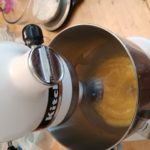
-
I’m using my kitchen servant for this, which cuts your whipping time in half
-

-
greased pans, I wasn’t sure how much this was going to make, so I had two ready
-
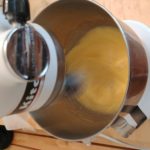
-
No seriously, you whip a lot of air into the eggs
-
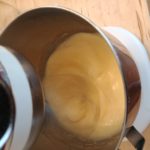
-
Insert obvious Devo reference
-
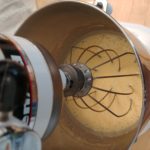
-
They should look like this once they’re ready, very frothy and pale from the amount of air whipped in
-
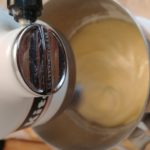
-
Adding in the flour and sugar bit by bit
-
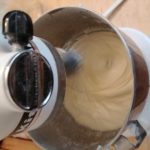
-
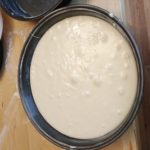
-
look at all those bubbles, I probably should have tapped it a bit to get some of the larger bubbles out
-
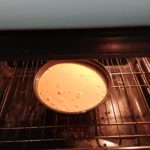
-
Into the oven
-
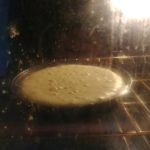
-
This is about as much as I expected it to rise
-

-
Look at that rise!
-
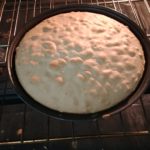
-
Done! It was a bit paler than expected so it’s just a little drier than planned as I kept expecting it to brown more
-
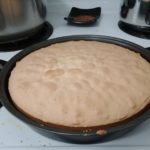
-
Can’t wait to eat this
-
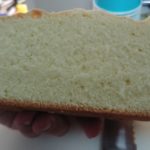
-
Look at that crumb, it was so much lighter and more airy than expected
-

-
Just because it’s period doesn’t mean I can’t add icecream to it after 😛
Like this:
Like Loading...















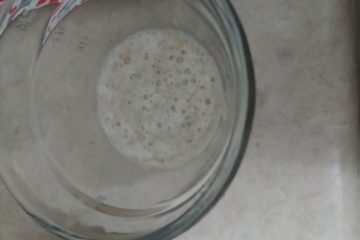
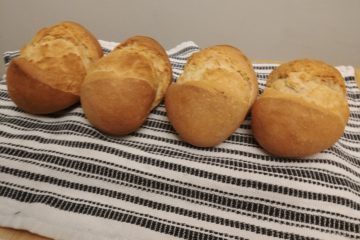
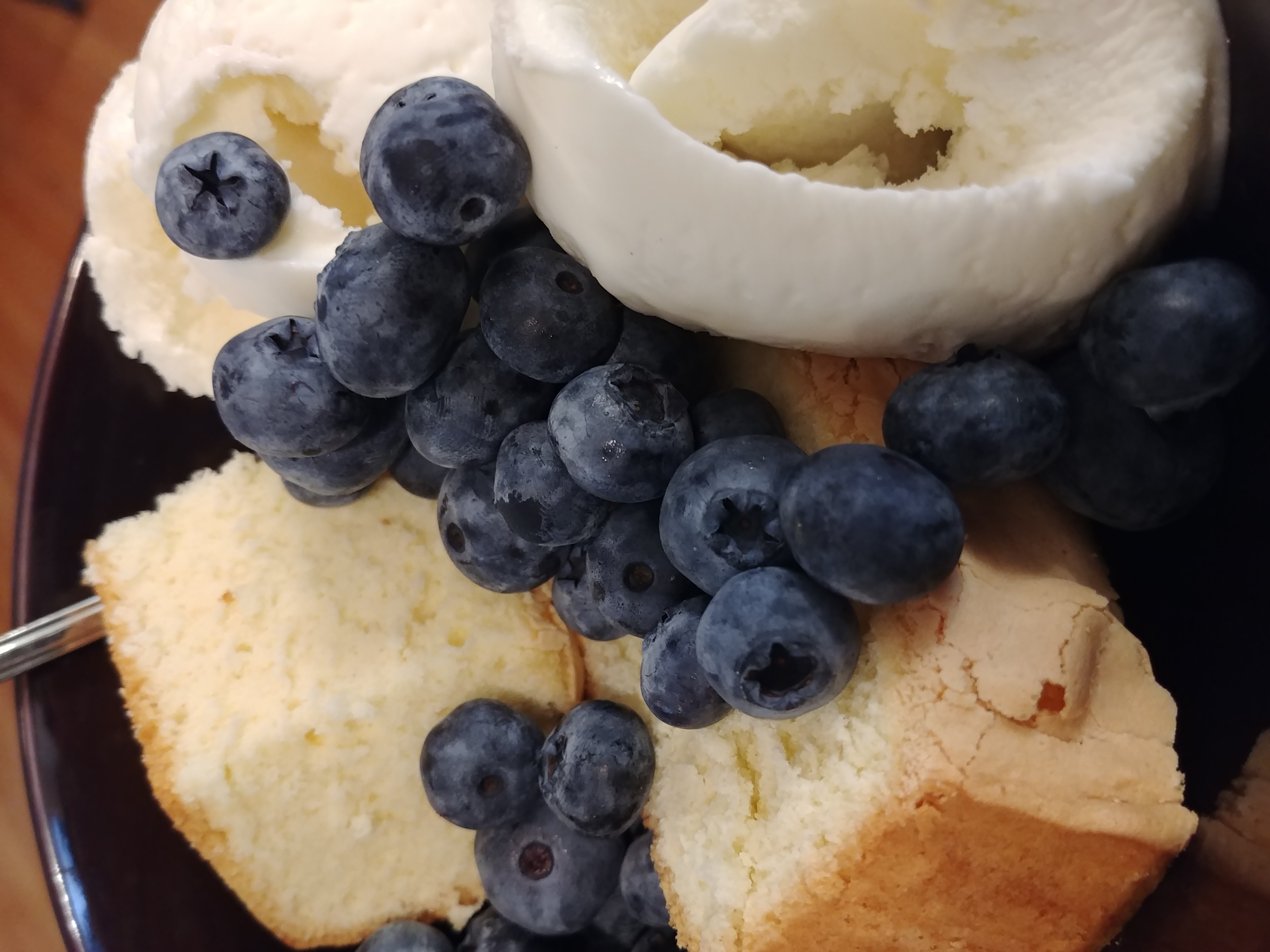
1 Comment
Kira Wagoner · August 23, 2020 at 3:00 pm
Awesome! celebrating sponge cake day today and wanted to keep it traditional! thank you for the translated recipe